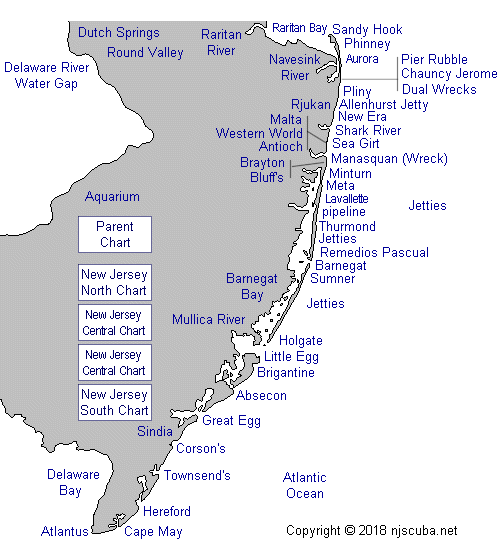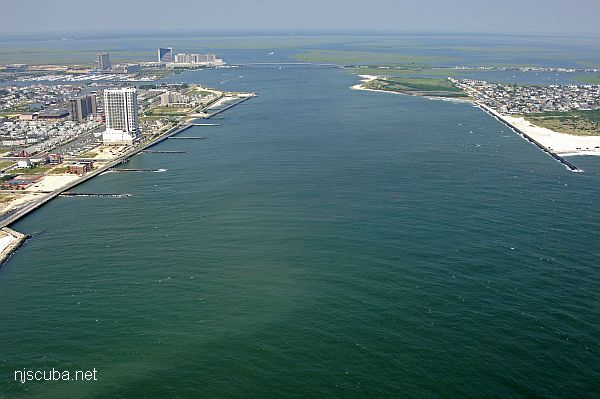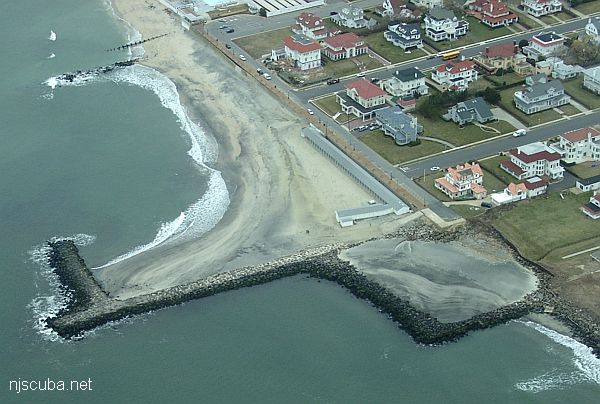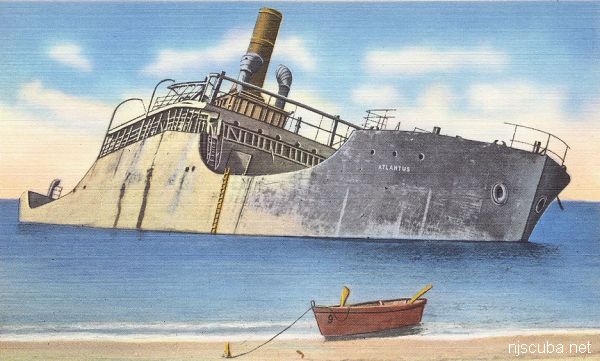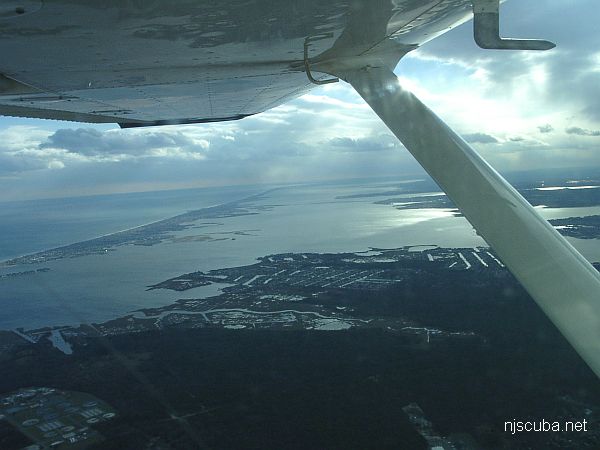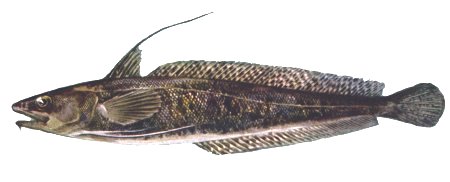New Jersey Coast Dive Sites (1/6)
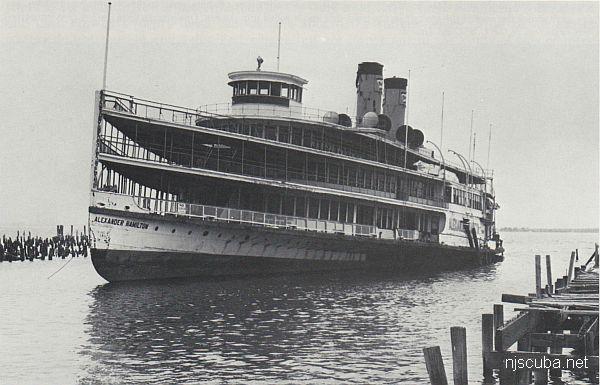
The Alexander Hamilton was the last of the steam-powered side-wheel riverboats of the Hudson River Day Line. Built in 1924, she ceased operations in 1971. A well-meaning group pulled the Hamilton from the mud in 1977 and moved her to a temporary berth along the east side of the Navy pier, planning to restore her as a museum. Unfortunately, at the new more-exposed location, the old vessel was sunk and reduced to scrap by a sudden storm in November of that year. The last records indicate that the wreck is still there, and you can even make out the outline on Google Earth.
More: Alexander Hamilton ...
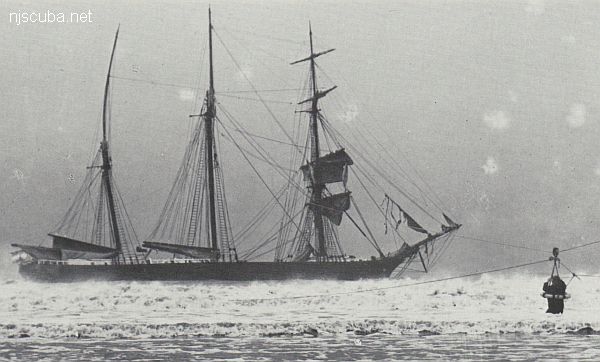
- Type:
- shipwreck, sailing ship, USA
- Built:
- 1876
- Specs:
- ( 180 ft ) 986 tons, 10 crew
- Sunk:
- Friday March 27, 1914
ran aground - no casualties - Depth:
- 20 ft
Probably sanded-in by beach restoration work
More: Antioch ...
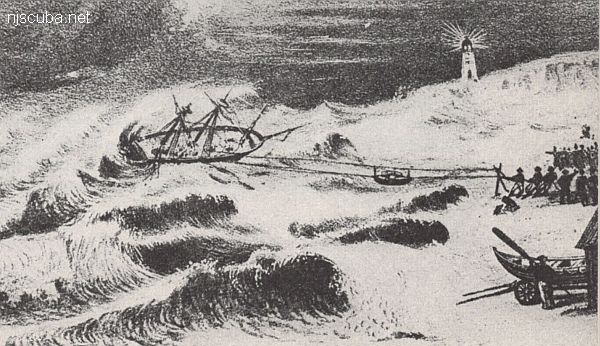
- Type:
- shipwreck, sailing ship, England
- Sunk:
- Saturday, January 12, 1850
grounded in storm - 1 casualty
More: Ayrshire ...
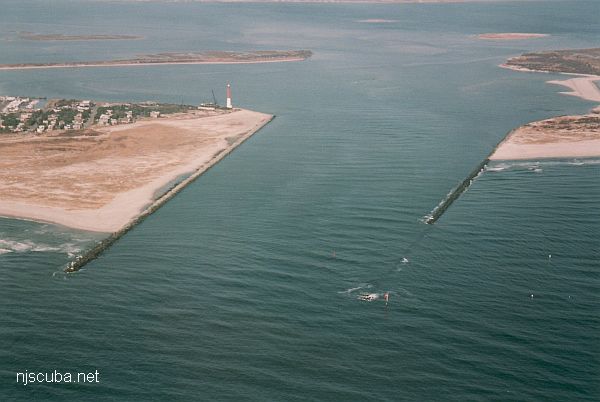
- Type:
- major ocean inlet with strong current, surf, and heavy boat traffic
- Depth:
- 45 ft
More: Barnegat Inlet ...
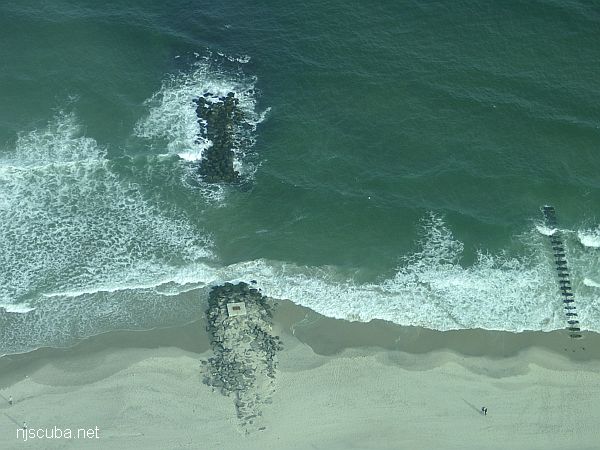
Dozens of jetties up and down the coast have been cut-though at the base like this one, making them inaccessible to fishermen, but not divers !
More: Beach Jetties ...
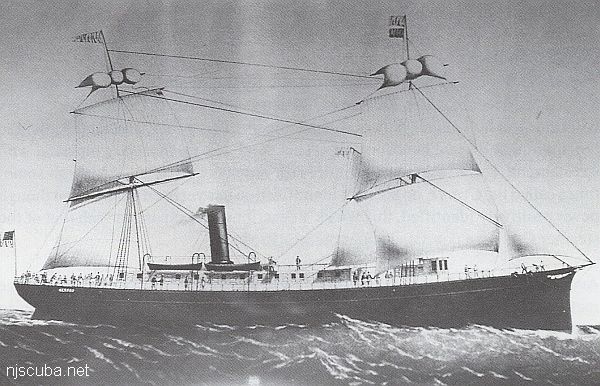
- Type:
- shipwreck, steamer ( assuming it is the Creole ) USA
- Built:
- 1862, Mystic CN, USA
- Specs:
- ( 194 x 34 ft ) 1229 tons
- Sunk:
- March 17, 1868, ran aground in fog - no casualties
- Depth:
- 20 ft
More: Bluff's Wreck / Creole? ...

